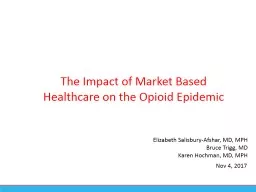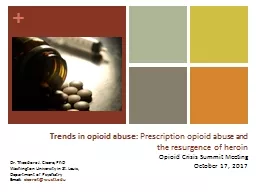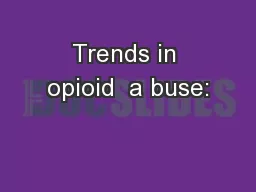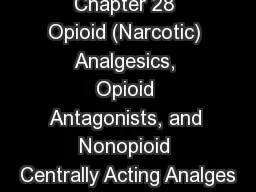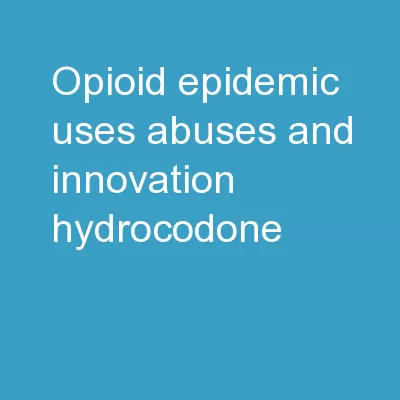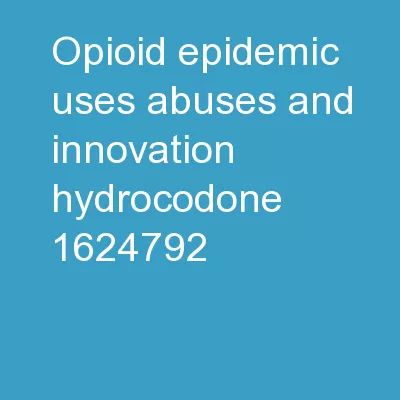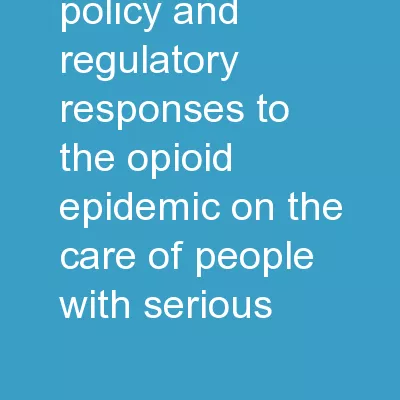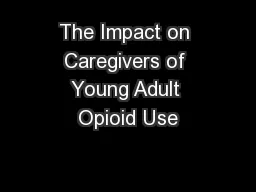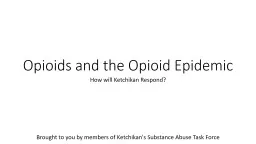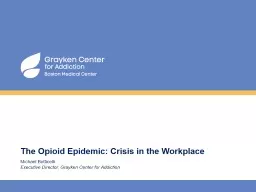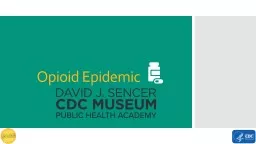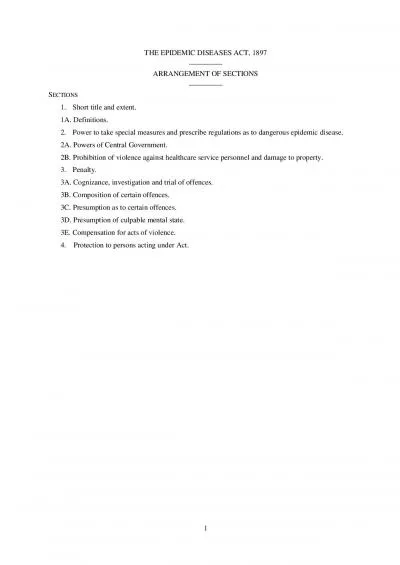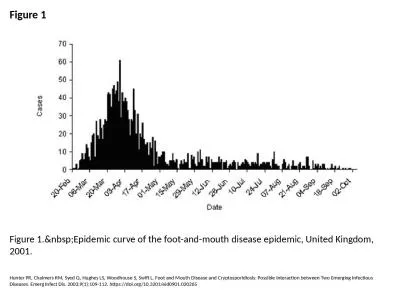PPT-The Impact of Market Based Healthcare on the Opioid Epidemic
Author : karlyn-bohler | Published Date : 2018-12-23
Elizabeth SalisburyAfshar MD MPH Bruce Trigg MD Karen Hochman MD MPH Nov 4 2017 No financial disclosures The Opioid Crisis in the US where we are and how we got
Presentation Embed Code
Download Presentation
Download Presentation The PPT/PDF document "The Impact of Market Based Healthcare on..." is the property of its rightful owner. Permission is granted to download and print the materials on this website for personal, non-commercial use only, and to display it on your personal computer provided you do not modify the materials and that you retain all copyright notices contained in the materials. By downloading content from our website, you accept the terms of this agreement.
The Impact of Market Based Healthcare on the Opioid Epidemic: Transcript
Download Rules Of Document
"The Impact of Market Based Healthcare on the Opioid Epidemic"The content belongs to its owner. You may download and print it for personal use, without modification, and keep all copyright notices. By downloading, you agree to these terms.
Related Documents

